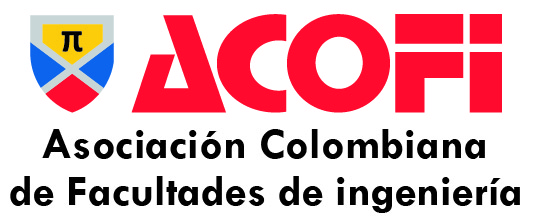Teacher evaluation through BSC and DEA
DOI:
https://doi.org/10.26507/rei.v1n2.42Keywords:
data envelopment analysis, balanced score card, educational evaluationAbstract
This work uses Balanced Scorecard (BSC) and Data Envelopment Analysis (DEA) to make one first approach to the model of pursuit and integral control of the management in the Industrial Engineering Program of Fundación Universidad Central, Bogotá (Colombia), initially in educational evaluation. In its present state, the model uses the information of different aspects from the courses´s quality function, organized according to the classic perspectives of the BSC and compiled by means of applied surveys to students of the different courses offerted.The obtained data is processed statistically and incorporated to the DEA model, which provides mainly: efficiency measures of the educational processes, better practices identification, directions of improvement for each course – teacher unit, and reference values for the strategic variables that integrates the BSC and their reports.
Downloads
References
AHN, Taesik and SEIFORD, Lawrence M. (1993) Sensitivity of DEA to Models and Variable Sets in a Hypothesis Test Setting: The Efficiency of University Operations, Creative and Innovative Approaches to the Science of Management. IC2 Management and Management Science Series, Number 5. IC2 Institute. The University of Texas at Austin.
ATHANASSOPOULOS, Antreas D., and SHALE, Estelle. (1997) Assessing the Comparative Efficiency of Higher Education Institutions en the UK by means of Data Envelopment Analysis. Carfax Publishing Ltd.
BEASLEY, J.E. (1995) Determining Teaching and Research Efficiencies, Journal of the Operational Research Society, 46. pp. 441 – 452.
CABALLERO, R., Galache, T., GÓMEZ, T., MOLINA, J. and TORRICO, A. (2001) Efficient Assignment of Financial Resources within a University System, Study of the Universidad of Malaga. European Journal of the Operational Research, Vol, 133. pp. 298 – 309.
COHN, E., Rhine, S. and SANTOS, M. (1989) Institutions of higher education as multi-product firms: economies of scale and scope. Review of Economics and Statistics, 71, pp, 284 – 290.
COOPER, William W., SEIFORD, Lawrence M. and TONE, Karou. (2000) Data Envelopment Analysis: A Comprehensive Text with Models, Applications, References and DEA-Solver Software, Kluwer Academic Publishers. Second Printing.
Dormount University (2006). Departament of Operations Research. EMS: Efficiency Measurement System A Data Envelopment Analysis (DEA) Software. Consultado en Julio 14 de 2006 en http://www.wiso.uni-dortmund.de/lsfg/or/scheel/ems/#feat
JOHNES, J. and TAYLOR, J. (1990) Performance Indicators in Higher Education (Buckingham, SRHE and Open University Press).
KAPLAN, Robert y NORTON, David. Cómo implantar el cuadro de Mando Integral. Gestión 2000. Editorial Planeta Colombiana. S.A. 2004.
KAPLAN, Robert y NORTON, David (2004). El Cuadro de Mando Integral. Gestión 2000. Editorial Planeta Colombiana. S.A. 2da. Edición.
KORHONEN, P., TAINO, R. and WALLENIUS, J. (2001) Value efficiency analysis of academic research, 130, pp. 121 – 132.
PRIOR, Diego y THIEME, Claudio. (2001) Análisis Frontera de la Eficiencia en Educación: Una Comparación Internacional, Documento de Trabajo, Departamento de Economía de Empresa- Universidad Autónoma de Barcelona.
RAY, Subhash C. (1991). Resource Use Efficiency in Public Schools: A Study of Connecticut Data. Management Science. Vol 37, No. 12. pp. 1620 - 1628
ROBST, John. (2001) Cost Efficiency in Public Higher Education Institutions, The Journal of Higher Education, Vol. 72, No. 6, pp. 730 – 750.
Links relacionados
BSC
• http://www.ciberconta.unizar.es
• http://www.som.cranfield.ac.uk/som/cbp/bscorecard.org/bkgd/index.html
• http://www.balancedscorecard.org
• http://www.tablero-decomando.com
DEA
• http://www.wiso.uni-dortmund.de/lsfg/or/scheel/doordea.htm
• http://www.etm.pdx.edu/dea/homedea.html
• http://mat.gsia.cmu.edu/mstc/dea/dea.html
• http://users.tkk.fi/~patte/links/dealinks.html
• http://heliodor.bwl.uni-mannheim.de/webdea.html
• http://www.deafrontier.com/books.html
• http://www.deafrontier.com/deaintro.html
• http://hdl.handle.net/1992/449
• http://hdl.handle.net/1992/584
• http://hdl.handle.net/1992/291
Downloads
Published
How to Cite
Issue
Section
License
Total or partial reproduction of the documents published in the journal is authorized only when the source and author are cited.
| Article metrics | |
|---|---|
| Abstract views | |
| Galley vies | |
| PDF Views | |
| HTML views | |
| Other views | |









